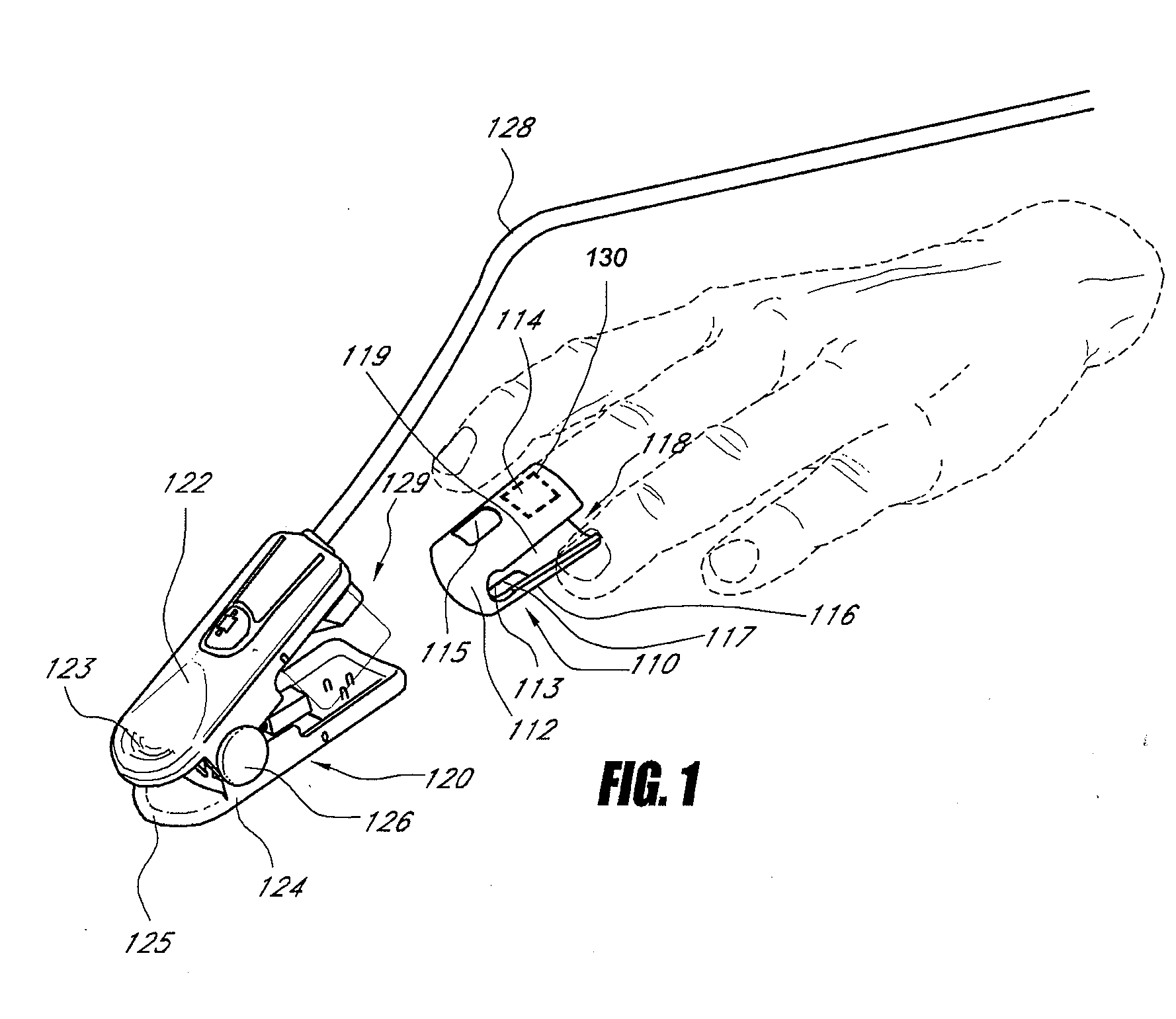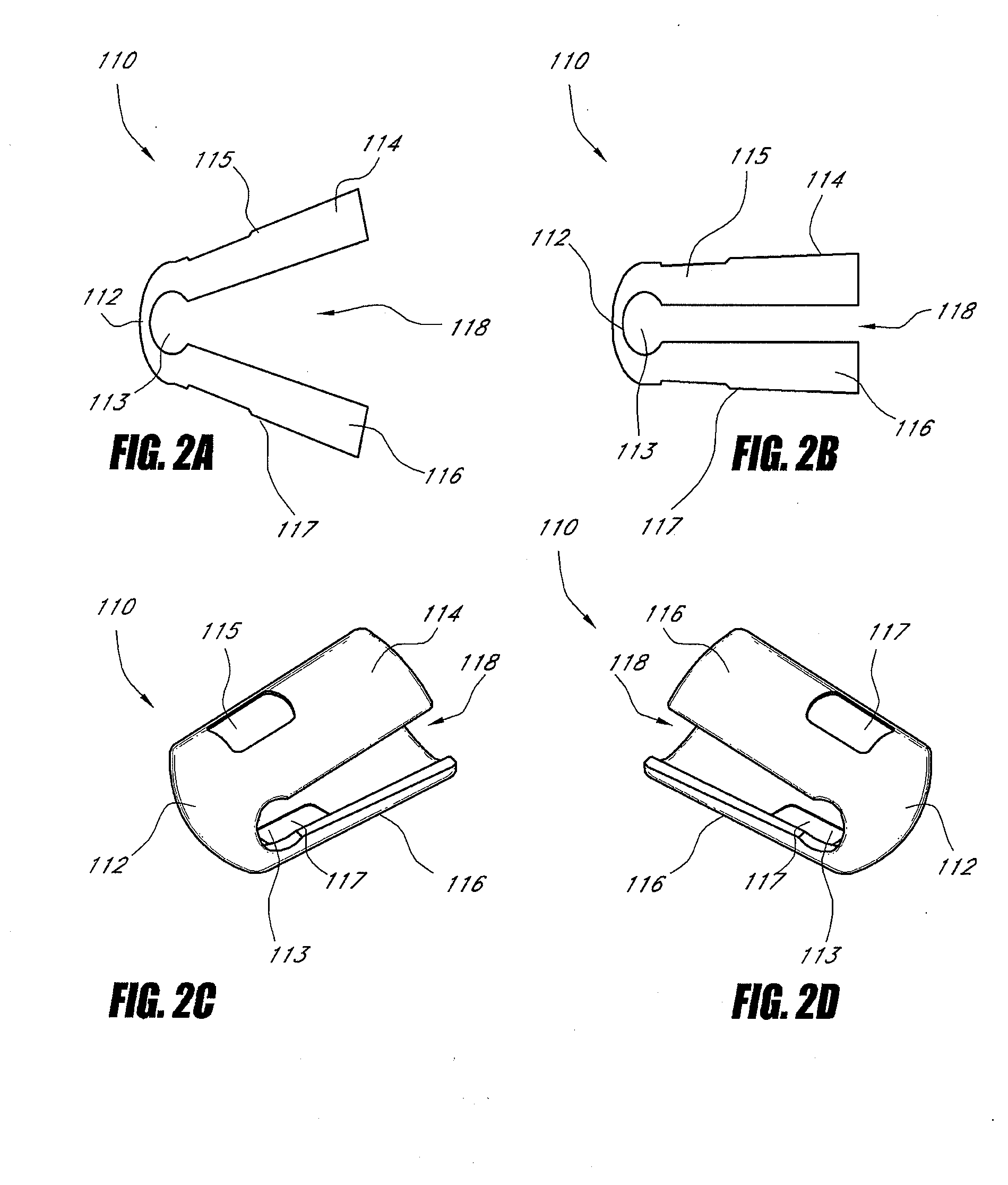Disposable components for reusable physiological sensor
a technology of physiological sensors and components, applied in the field of disposable components of physiological sensors, can solve the problems of exposing sensors, in particular reusable sensors, to the potential risks of contamination and the resulting spread of nosocomial (hospital-acquired) infections, and reusable sensors may still be at risk for bacteria including mrsa, skin infections, etc., to prevent the spread of nosocomial infections and prevent contamination of reusable sensors
- Summary
- Abstract
- Description
- Claims
- Application Information
AI Technical Summary
Benefits of technology
Problems solved by technology
Method used
Image
Examples
Embodiment Construction
[0028]A sensor cartridge according to embodiments of the disclosure is capable of being used with a non-invasive physiological sensor. Certain embodiments of the sensor cartridge protect the sensor from damage, such as damage due to repeated use, reduce the need for sensor sanitization, or both. Further, embodiments of the sensor cartridge are positionable on the user before insertion in the sensor and allow for improved alignment of the treatment site with the sensor. In addition, the sensor cartridge of certain embodiments of the disclosure can be configured to allow a single sensor to comfortably accommodate treatment sites of various sizes such as for both adult and pediatric applications. The terms “sensor cover” and “sensor cartridge” are used throughout to describe various embodiments of the disclosure. The terms may be used interchangeably and are not intended to be limiting.
[0029]The tissue site of the illustrated embodiments is a finger and the following description theref...
PUM
 Login to View More
Login to View More Abstract
Description
Claims
Application Information
 Login to View More
Login to View More - R&D
- Intellectual Property
- Life Sciences
- Materials
- Tech Scout
- Unparalleled Data Quality
- Higher Quality Content
- 60% Fewer Hallucinations
Browse by: Latest US Patents, China's latest patents, Technical Efficacy Thesaurus, Application Domain, Technology Topic, Popular Technical Reports.
© 2025 PatSnap. All rights reserved.Legal|Privacy policy|Modern Slavery Act Transparency Statement|Sitemap|About US| Contact US: help@patsnap.com



